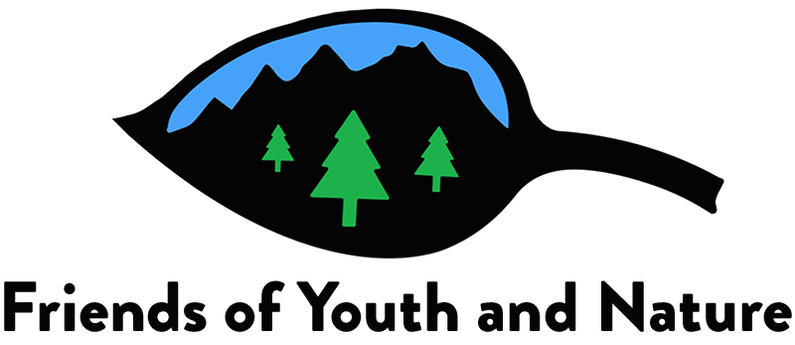|
Tips to help you connect your family to nature!
|
|
Students build blue bird nesting boxes as part of a Public Land Day celebration on the Grand Mesa, Uncomaphgre and Gunnison National Forest. This effort is to help kids learn about our local natural resources on public lands and engage in actions that teach them how to become stewards of our environment As the end of the year approaches, many households are starting to consider where to direct year-end giving dollars. There are many crucial needs in our community that deserve support; in a perfect world, we would be able to fund every cause, but in the real world you’ll need to make choices about where to contribute your year-end donations in a way that aligns with your values and your hopes for the future. If youth mental health, resiliency, and public lands are important to you, then supporting programs to get western slope kids into outdoor educational and recreational programs provides a long-term solution for those issues facing our youth, and our community at large. What impact does an early introduction to the outdoors have on who a child will become as an adult, and how are they affected physically, mentally, and emotionally as they grow up? As it turns out, childhood exposure to outdoor activities can be directly connected to positive long-term outcomes in these areas. Physical Wellness Children are increasingly neglecting outdoor play in favor of the digital world—reducing kids’ screen time is often a major struggle for parents. Computers, mobile devices, and video games are passive forms of entertainment, and they don’t call for physical coordination, strength, endurance, or any of the other attributes necessary for a healthy body. Outdoor play, on the other hand, promotes all of these things, and is a natural method of encouraging physical activity in young people. A 2015 metanalysis of studies regarding the effects of time spent outdoors on children found, “outdoor time is positively related to physical activity and negatively related to sedentary behavior in children aged 3–12 years'' (https://www.mdpi.com/1660-4601/12/6/6455). The more outdoor time children have, the more physical activity they take part in and, conversely, the less sedentary behavior they display. Mental Health & Resiliency Many people spend time outdoors because it brings them a sense of happiness and well-being. If adults need to get away to nature every now and then to stay happy, surely children must benefit from these quieter natural spaces as well. Perhaps unsurprisingly, a 2018 study showed that the more time children spend in nature and the greater sense of connection they personally feel with nature, the less likely they are to experience psychosomatic symptoms such as irritability, anxiety, difficulty sleeping, headache, stomach ache, backache, and other maladies. The benefits start with as little as 30 minutes of outdoor activity per week (https://pubmed.ncbi.nlm.nih.gov/29679604/). As we consider ways to address the increasing prevalence of mental health challenges in young people, including a disproportionately high suicide rate in our area, outdoor activities can play a crucial role in building resiliency and promoting mental well-being in our youth. Stewardship of Public Lands Physical activity, cognitive development, and emotional well-being are relatively easy to quantify in research. But what about something like the desire to preserve our natural areas, or an understanding of the importance of good stewardship practices for our public lands—can we quantify these outcomes? Though it’s more difficult to show a correlation between time spent outdoors during childhood and an individual’s likelihood to become a good environmental steward, it has been shown that the amount of time spent outdoors has a direct correlation with a child’s feelings of connection with nature. This sense of connection with the natural world then has a direct influence on behaviors related to environmental stewardship in children such as, “conserving water, turning out lights, recycling, talking about the environment, and picking up litter” (https://scholarworks.umass.edu/cgi/viewcontent.cgi?article=1001&context=nerr). The more time young people spend in the outdoors, the more likely they will become involved with environmental stewardship and preservation of our public lands. As you consider how to distribute year-end donations in our community in a way that most aligns with your values, know that when you donate to organizations that provide opportunities for local kids to get outdoors for science education and recreational field trips, you’re not only directly contributing to their physical and mental well-being—you’re also helping to raise a generation that will value our natural environment and ensure the preservation of public lands for years to come.
4 Comments
Fourth grade students spent a morning on the Grand Mesa National Forest learning to cross-country ski. It isnt as easy as it looks with very different levels of physical coordination but the kids had a great time and learned some endurance skills! Friends of Youth and Nature (FOYAN) promote these types of outings to get more youth outside in Delta, Montrose, Mesa and Ouray counties. What impact does an early introduction to the outdoors have on who a child will become as an adult, and how they are affected physically, mentally, emotionally—and even morally as they grow up? As it turns out, we can directly connect childhood exposure to outdoor activities with positive long-term outcomes. Time spent outdoors, whether in play, outdoor education, recreation, or even gardening can play a crucial role in building resiliency and have a positive impact on the mental and physical well-being in our youth. Playing outside helps children use their imaginations to develop creative thinking and problem solving skills. Many outdoor activities require kids to work together and communicate in order for everyone to have fun or to accomplish a common goal. It has also been discovered that a bacterium in the soil increases serotonin in the brain and improves mood. Who knew that getting dirty is a good thing! The more outdoor time children have the more physical activity they get. Outdoor play promotes physical coordination, strength, endurance, attributes necessary to develop a healthy body and mind. It is an easy and natural way of encouraging physical activity in young people. As adults, many of us have learned an escape to a special place in nature helps us relax. A visit to our nearby public lands to exercise, walk with a friend, or enjoy the beautiful weather certainly helps us recharge and re-set mentally and emotionally. Our kids need that too! The more time children spend in nature and the greater sense of connection they personally feel with nature, the less likely they are to experience symptoms such as irritability, anxiety, difficulty sleeping, headache, and other physical afflictions. Nature's fix helps them build mental and physical resiliency. It has been shown that the more time we can get younger generations to spend in the outdoors, the greater sense of connection they will feel with nature, and the more likely they will become involved with environmental stewardship and preservation. We want the next generation to feel ownership towards our public lands and care for our natural resources. After all, we are part of nature. Simple actions such as conserving water, turning out lights, recycling, establishing native plants, talking about the environment, and picking up litter is a great start. At Friends of Youth and Nature (FOYAN), we believe strongly in both the individual impacts that activities in nature have on each young person, as well as the broader long-term goal of creating another generation who feel strongly about the importance of maintaining and safeguarding our public lands for the benefit of all. Our goal is to continue supporting programs that have both a personal and philosophical impact on the future of our natural areas, in order that future generations may enjoy these spaces for many years to come. We would like your support to help FOYAN continue to provide a variety of outdoor experiences for our local youth. In our sixth year as a nonprofit, we have served over 8,000 youth and their families with outdoor activities and environmental learning opportunities. Please consider donating to FOYAN through Colorado Gives on or before December 5th, where your donations will be boosted through the incentive fund. Give Where You Live and donate here to help us make the biggest impact: www.coloradogives.org/organization/friendsofyouthandnature Children’s overall health is positively affected by connections to outdoor spaces. This is essential for a healthy balance with technology use. For the first time in history, most of our children are growing without a real connection to nature. Nature-deficit disorder was first described in 2005 in the book, Last Child in The Woods: Saving our Children from Nature-Deficit Disorder. Nature-deficit disorder isn’t a medical diagnosis, but it is a term recognizing an urgent problem. Richard Louv coined the term, and it was recognized by many as a call to action – to save children from losing a connection to nature. Urbanization and technological advancements are a trend, but the resulting gap between the natural world and children creates concern. Since the recognition of nature deficit disorder, numerous scientific studies have shown that disconnection from nature can result in diminished use of the senses, higher obesity rates, attention difficulties, and a range of illnesses. On average, children ages 8-12 spend 4 to 6 hours a day viewing a screen, and teenagers can spend up to 9 hours with screens, while spending less than an hour outdoors. Regular screen time and deprivation from recreating outdoors leads to mood swings, lower grades, sleep deprivation, a poor self-image, screen dependency, irregular psychological shifts, depression, and lower cognitive function. Virtual realities can affect a child’s demeanor and outlook on life. One of the goals of social media apps is to maximize the time spent on that interface. Children are immensely vulnerable to this and are susceptible to making screen time a priority in their day. Conflicts over screen time are common between parents and their children - as a parent you aren’t alone regarding this issue! Unfortunately, these conflicts can affect the level of parent engagement with their kids. Children who engage in too much screen time become less in tune with and more detached from their surroundings. Extreme situations can lead to depersonalization-derealization disorder, a serious medical illness. Children indulging in heavy social media may have reduced creativity and, decision-making ability, and an inability to have authentic interactions. There is power in conscious decision-making. Parents, relatives, friends, and mentors can help kids make healthy decisions about how they can feed their bodies and brains. Alternatives to watching a video, show or playing a game might include a walk to a park, a play date in a neighbor’s backyard, building a fort, climbing up a tree or a spontaneous scavenger hunt! One solution is in the magic experiences outdoor spaces can bring. A study in the journal Environment and Behavior demonstrates that children who spend even short periods outdoors see a reversal in fatigue and concentration issues. Indulging in outdoor activities boosts children’s morale, energy levels, perception, and drive. Kids’ experiences recreating in the outdoors gives them a chance to look far beyond a screen and to become immersed in what it is like to live, and belong in the natural world. Here in Western Colorado, we have many organizations and passionate teachers who are more than ready to assist kids and their families with becoming familiar with the great outdoors. As a parent or guardian, are you looking for a few ideas to encourage your kids to take it outside? Here are a few creative outdoor activities you can do with your kids: Generation Wild suggests 20 ideas for 20 minutes- the magic number for helping kids feel better, 100 things to do before you are 12, backyard hacks – the best things to happen in the backyard since the invention of the BBQ. These ideas are in Spanish and English. There are many fun ways to engage your child with nature. How about sharing the experiences of a new outdoor activity together as a family such as snowshoeing, skiing, or building snow caves? The Nature Connection is hosting a free pop up ski lending day along with lessons on Feb 11 at County Line Trailhead on the Grand Mesa. Your kids will love the extra attention and encouragement of a shared experience with you along with the laughter and conversation. Your kid’s mental and physical health and your family relationships are sure to benefit! Supporting Links: what-is-nature-deficit-disorder depersonalization-derealization-disorder Depersonaliztion experiences during Covid-19 lockdown Tree School Will Cure Your ‘Nature Deficit Disorder’ Health Benefits of Nature Why It’s So Hard to Feel Like You’re a Good Parent When It Comes to Screen Time… and What You Can Do About It
We are so lucky to live in Colorado, where there is such a wide variety of outdoor opportunities for youth close to home in local state parks and in our vast open landscapes across the state. This past week, the Colorado Equity Grant Board awarded various Colorado nonprofits a total of $1.3 million to help more kids and families experience the outdoors. Here on the Western Slope, Friends of Youth and Nature was awarded a generous grant of $67,180 towards our efforts in getting local youth into outdoor activities. This gift to our citizens is an effort to increase access to the outdoors for our youth and instill stewardship practices of our state's outstanding natural resources in the next generation. In the long run, this investment will increase the health of Coloradans and our communities. The personal benefits gained from outdoor experiences is not a novel concept; there is a plethora of research proving that outdoor activities overall increase individual well-being.
According to Dr. Constance Scharff in Psychology Today, “Children are increasingly spending time indoors engaged with various forms of electronic devices: phones, computers, tablets, televisions, and gaming consoles. There is significant data indicating that time spent outdoors, whether in play, outdoor education or recreation, or even gardening, can have a real and positive impact on mental and physical well-being.” Author Dr. John J. Ratey in his book, The Revolutionary New Science of Exercise and the Brain, discusses how exercise influences the brain on a cellular level. He also talks about how lack of real play does hurt children because they need to use their imaginations to develop creative thinking and problem solving skills. Many outdoor activities require kids to work together and communicate in order for everyone to have fun or to accomplish a common goal. He also describes a bacterium in the soil that increases serotonin in the brain and improves mood. Who knew that getting dirty is a good thing! There are many activities to do outdoors, including hiking, camping, rafting, paddle boarding, rock climbing, skiing, sledding, orienteering, horseback riding, and raising animals, just to name a few. Some examples of activities and research-proven benefits include: Gardening – Teaches patience, perseverance and empathy (and don’t forget that special bacterium that increases serotonin levels). According to Dr. Scharff, gardening teaches children about the food cycle and nutrition, provides important life skills, and creates opportunities for children to learn competence, resilience, and community building. There are Junior Master Gardener programs that can be integrated into school curricula or used at home or with youth groups. Children’s gardening programs ignite a passion for good food, provide opportunities for people of all ages to work together, and develop important life skills that can lead to a lifetime of healthy choices. Food produced may be used in home or school settings, or canned for use in the off-season, and the excess can be donated to local food banks. Walking and talking − Builds conversation skills and helps with the flow of creative thinking. Just taking a long walk outdoors with a friend has many benefits. State and national parks offer a wide variety of outdoor activities for youth and families. These are not necessarily just hikes or camping, but interactive wildlife activities, archaeological explorations, storytelling times, and much more. The park service often coordinates activities and provides special programming for youth groups. Every Kid in a Park is a National Park Service Program to encourage youth visitation to national parks. Every Fourth grader gets a yearlong free family pass to any national park. Visit their website to find out more, and encourage your kids to become junior rangers (www.nps.gov/kids/every-kid-outdoors.htm). Public lands managed by the U.S. Forest Service and Bureau of Land Management have mostly free access with a variety of trails for mountain biking, hiking, cross country skiing and snowshoeing. Bird Watching − Watching any wildlife has its benefits! Observation can help build attention skills while also practicing mindfulness and coping strategies. It also stirs a sense of curiosity in young people. Many birding organizations provide activities and/or mentors to teach children about bird watching. Check into your local Audubon chapter, Colorado Field Ornithologist groups, or the Bird Conservancy of the Rockies. National and state parks also offer nature programs that are scheduled or can be requested by contacting them. Audubon Adventure for Kids highlights curriculum and related DIY activities that can be done at home or in a yard or park (www.audubon.org/get-outside/activities/audubon-for-kids). Scavenger hunts are a great way to get kids excited about exploring nature and improve their observation and attention skills. Looking for a bird nest, a cactus flower, a cool rock, or an animal track can be very exciting. Search the internet for nature/outdoor scavenger hunts; you will be surprised with how many come up. Horses − Studies have shown that working with horses helps children, teens, and adults make significant improvements in the areas of confidence, anger management, empathy, impulse control, self-esteem, PTSD, anxiety, and overall emotional well-being. Did you know that horses can be an emotional mirror to ourselves? Research has also shown that horses recognize and react to human emotions from our body language and facial expressions. Since they are herd and prey animals, they have a strong emotional sense, reflect and respond to the behavior of other horses in the herd. Even playing with your family pet or walking your beloved dog has huge benefits. Speaking of the influence animals have on youth, Meet Wilder! This is a very engaging video you can watch with your kids featuring Wilder. It will inspire them to go outdoors and play (www.generationwild.com/). Are you looking for something that will help your child build social interaction skills, confidence, problem solving skills, independence, creativity, and emotional well-being? Take them outside! No matter what activity they do outdoors, just getting them outside on a regular basis has so many benefits to them, their families, and our communities. Outdoor activities can play a crucial role in building resiliency and promoting mental well-being in our youth. A group of kids try a new outdoor endeavor at the Black Canyon of the Gunnison National Park. The end-of-year giving season is in full swing, and you’re probably hearing a lot of appeals from nonprofits to help fund their community impacts. There are so many crucial needs in our area, all of which are eminently deserving of your support; in a perfect world we would be able to help with all of the causes, but in the real world you’ll need to make choices about where to contribute your year-end donations in a way that aligns with your ideals, priorities, and your hopes for the future. I’d like to make a case for the importance of getting western slope kids into outdoor educational and recreational programs as a long-term solution for many of the issues facing our youth, and our community at large. What impact does an early introduction to the outdoors have on who a child will become as an adult, and how are they affected physically, mentally, emotionally—and even morally as they grow up? As it turns out, we can directly connect childhood exposure to outdoor activities with positive long-term outcomes. Physical Fitness It’s no secret that children are frequently neglecting more physical, outdoor forms of play in favor of the digital world—reducing kids’ screen time is often a major struggle for parents. Computers, mobile devices, and video games are passive forms of entertainment, and they don’t call for physical coordination, strength, endurance, or any of the other attributes necessary for a healthy body. Outdoor play, on the other hand, promotes all of these things, and is a natural method of encouraging physical activity in young people. A 2015 metanalysis of studies regarding the effects of time spent outdoors on children found, “outdoor time is positively related to physical activity and negatively related to sedentary behavior in children aged 3–12 years'' (Gray, 2015). The more outdoor time children have the more physical activity they take part in and, conversely, the less sedentary behavior they display. Resiliency Many people spend time outdoors because it brings them a sense of happiness and well-being. If adults who have grown accustomed to the ways of the modern world still need to get away to nature every now and then to stay happy, surely children must benefit from these quieter natural spaces as well. Perhaps unsurprisingly, a 2018 study showed that the more time children spend in nature and the greater sense of connection they personally feel with nature, the less likely they are to experience psychosomatic symptoms such as irritability, anxiety, difficulty sleeping, headache, stomach ache, backache, and other physical afflictions. The benefits start with as little as 30 minutes of outdoor activity per week (Piccininni, 2018). As we consider ways to address the increasing prevalence of mental health challenges in young people, including a disproportionately high suicide rate in our area, outdoor activities can play a crucial role in building resiliency and promoting mental well-being in our youth. Stewardship Physical activity, cognitive development, emotional well-being—these things are relatively easy to quantify in research. But what about something like the desire to preserve our natural areas, or an understanding of the importance of good stewardship practices for our public lands? Can we quantify these outcomes? Though it’s more difficult to show a correlation between time spent outdoors during childhood and an individual’s likelihood to become a good environmental steward, it has been shown that the amount of time spent outdoors has a direct correlation with a child’s feelings of connection with nature. This sense of connection with the natural world then has a direct influence on behaviors related to environmental stewardship in children such as, “conserving water, turning out lights, recycling, talking about the environment, and picking up litter” (Andrejewski, 2011). The more time we can get younger generations to spend in the outdoors, the greater sense of connection they’ll feel with nature, and the more likely they will become involved with environmental stewardship and preservation. As you consider how to distribute your year-end donations in our community in a way that most aligns with your values, know that when you donate to organizations that provide opportunities for local kids to get outdoors for science education and recreational field trips, you’re not only directly contributing to their physical and mental well-being—you’re also helping to raise a generation that will value our natural environment and ensure the preservation of public lands for years to come. Friends of Youth and Nature (FOYAN) is a non-profit organization that promotes opportunities for youth and families to go outside, experience outdoor activities and explore nature. To contribute through Colorado Gives Day and multiply the impact of your donation, please visit https://www.coloradogives.org/organization/friendsofyouthandnature Andrejewski, Robert, et al. “An Examination of Children's Outdoor Time, Nature Connection, and Environmental Stewardship.” ScholarWorks@UMass Amherst, Proceedings of the Northeastern Recreation Research Symposium, 2011, https://scholarworks.umass.edu/cgi/viewcontent.cgi?article=1001&context=nerr. Gray, Casey, et al. “What Is the Relationship between Outdoor Time and Physical Activity, Sedentary Behavior, and Physical Fitness in Children? A Systematic Review.” International Journal of Environmental Research and Public Health, vol. 12, no. 6, 8 June 2015, pp. 6455–6474., doi:10.3390/ijerph120606455. Piccininni, Caroline, et al. “Outdoor Play and Nature Connectedness as Potential Correlates of Internalized Mental Health Symptoms among Canadian Adolescents.” Preventive Medicine, vol. 112, July 2018, pp. 168–175., doi:10.1016/j.ypmed.2018.04.020. Sniffing around the garden! Students from Delta Country are enjoying the organic smell of soil and herbs in their school garden. The sound of leaves crunching as you walk through the forest, the feeling of the warm sun on your face, the sight of a mule deer, the smell of a nearby campfire, and the taste of a freshly picked tart apple engage our five senses − sight, hearing, smell, taste, and touch. Together these senses help us get a clear picture of what is happening around us.
Have you ever taken a whiff of some smell that transported you back to a childhood memory? Maybe the smell of basil makes you think of your grandmother’s garden, or the smell of a campfire makes you think of a memorable camping trip. Does the smell of freshly cut grass or alfalfa confirm that summer is here? What smells remind you of autumn − the pungent organic smell of decomposing leaves in the forest, the fresh, moist scent of an oncoming snowstorm or the smell of roasted chili peppers? Smell is an intriguing sense because of its wiring in our brains. Scents stimulate our olfactory cells, travel on a fast track through our brain’s superhighway of connectivity, and bypass the brain’s switchboard (the thalamus). Smell stimuli go directly to the region of our brain (hypothalamus) involved in detecting threats and stress responses, and hormones are quickly issued to the appropriate places. By going directly to this brain region, our body responds faster to smells, according to Johan Lundström, a neuropsychologist at the Karolinska Institute in Sweden (The Scientist: exploring science and inspiring innovation). Certain smells can quickly trigger a physical reaction within us. For instance, smells can make us feel sick or warn us of danger (fire), or can make us feel hungry if we smell something yummy. Smell signals also go directly to another region of the brain called the hippocampus, which is responsible for forming and recalling memories. A sense of smell is the only fully developed sense a fetus has in the womb, and it is the one that is the most developed in a child until the age of around 10, when sight takes over. A prominent aroma researcher explained that because smell and emotion are stored as one memory, childhood tends to be the period in which you create the basis for smells you will love or hate for the rest of your life. And, like so many things in life, the sense of smell is impacted by aging. Although the cells that make up the olfactory system are replaced as they age and die, just like any cell, the rate of replacement slows after 50 years of age. To keep that keen sense of smell as you age, your olfactory cells need regular workouts, in terms of exposure and variety. It’s a “use it or lose it” kind of thing. Have you ever felt more calm or relaxed when you breathed in the wonderful smells of a pine forest or the fragrant smells of a flower garden? Studies have also shown that the smells of nature are linked to lower physiological stress (The Scientist: Exploring Life, Inspiring innovation). Even though the sense of smell for adults often operates in the background behind other senses, natural odor stimuli has a swift and direct effect on our parasympathetic system, the processes that allow us to rest and digest. It has the greatest impact on lowering blood pressure and other physiological stress reduction factors. Our noses can distinguish more than 1 trillion scents, according to new research by the National Institute of Health. The findings show that our sense of smell is far more sensitive than previously thought. You and your children take in many different smells every single second of every single day. How often do you really consider what you smell, especially while you are exploring the great outdoors with your children? Here are a few suggestions on how to get your kids to use their noses in nature:
Cody Davis is a long-time participant in Grand Valley Adaptive Climbing Club, and has helped to create community with newer participants. Photo Credit: Sloane Milstein Playing outside is an important part of growing up—there’s a wealth of evidence that time spent outdoors increases resiliency, promotes mental health, and teaches children skills that will help them grow into happy and healthy adults. If your child has a disability, though, it can be challenging to find outdoor activities that are accessible to their needs, and especially group activities that allow opportunities for important social connections and peer support. We are fortunate to have a number of organizations serving the Grand Junction area that specialize in facilitating affordable activities for kids with disabilities, and their families. This is not an exhaustive list; as you get involved with the local community of adaptive athletes, you’ll find many more opportunities beyond those listed below. Here are a few places to start: Colorado Discover Ability (CDA) is a well-known local non-profit that specializes in year-round adaptive outdoor recreation programs. In summer they organize rafting trips, cycling, and summer camps that are accessible to all. In winter they pivot to adaptive snowsports with well-qualified instructors who can teach kids to use a sit ski, ski with a vision impairment, and many other types of adaptive snowsports. More information is available at cdagj.org, and CDA also has numerous volunteer opportunities available if you’d like to help out. Ever heard of hippotherapy? No, there are no hippos involved—it’s actually therapeutic horseback riding, and local organization Harmony Acres Equestrian Center offers this service to both kids and adults with disabilities from their location in Loma. Through their therapeutic horseback riding programs, they use “specially trained instructors and well-trained horses, along with a team of volunteers, [to] work with individuals to target goals that improve physical movements and development, speech, emotional/behavioral regulation, core strength, and mood.” They offer their services on a sliding scale, with the goal of making this unique and wonderful recreation/therapy available to all who might need it. Visit them at harmonyacresec.org to learn more. Other local providers include Grand Valley Equine Assisted Learning Center in Fruita (gvequineassistedlearningcenter.org), Metaphorse in Montrose (metaphorse.com), Dare to Dream in Delta County (daretodreamincorporated.com), and 4 Leg Adventures in Delta County (4legadventures.com) also offer various equine therapy sessions. Sports are an important part of growing up for a lot of kids, and the social skills and support received through team sports can help your children grow into well-rounded adults. Our local Challenger Baseball team makes the sport of baseball accessible to all kids ages 8 to 18 (or up to 21 if still enrolled in school), with any type of developmental or physical disability. They also get to hang out with the JUCO players once a year, which is a big deal for the baseball fans! Find out more at challengerbaseball.net If you’re looking for an adventurous (but safe!) activity, check out the Grand Valley Adaptive Climbing Club (GVACC). Accessible to kids and adults of all abilities, this climbing program is prepared with the equipment and expertise necessary to get anyone to the top of the climbing wall. While the events take place indoors, once you and your child are more comfortable with climbing it will allow you to pursue outdoor climbing programs through organizations like Adaptive Adventures, which usually organizes at least one ice climbing trip each year in Ouray. GVACC typically meets on the third Thursday of every month at the Grand Valley Climbing gym on 25 Road, but the schedule can fluctuate—check the Facebook page for the exact date each month: facebook.com/GrandValleyAdaptiveClimbingClub Regardless of the type of activity your children are interested in, we’re very lucky to have a lot of organizations doing great work in our community to make athletics and the outdoors available to every kid, of any ability level. Take advantage of all that’s offered, and help your kids grow into happy and healthy adults surrounded by a network of their peers! Nothing like the thrill of catching a big one- even if it is a carp! Whether you’re a lifelong angler, or you’ve never picked up a rod and reel in your life, fishing can be a great way to spend time with your family and get outside to enjoy nature. What better way to spend a morning, or a whole day, than hanging out by a lake or river with a picnic and your kids, enjoying the chance for quiet and conversation? It can also be great for kids who are learning some life skills like patience, and the rewards thereof. Additionally, fishing is a fantastic way to teach kids about the fish, their habitat, their interaction with other plants and animals in the ecosystem, their life cycle, and so much more. The opportunities for outdoor education are endless! As far as new outdoor activities go, fishing also has a fairly low barrier to entry. If you’re just starting out you can get a basic fishing rod and reel for about $20, and an adult fishing license for about $46 per year for the first one, and $36 for the second; kids under 16 generally don’t need a fishing license, except under special circumstances (e.g. if they’re planning to use more than one rod at a time, in which case they would need a second-rod stamp). That means that your family could get started with fishing for under $70, which will set you up for almost unlimited days spent by the lake or river. Go to the Colorado Parks and Wildlife website (cpw.state.co.us) for a list of locations that sell fishing licenses, or for instructions on how to get your fishing license through the myColorado mobile app. As you plan your entry to the world of the angler there are some safety considerations when fishing with kids, so plan for these potential issues in advance. Of course the most immediate danger for children is the water itself—make sure your kids are always supervised around the water, and consider having them wear lifejackets even if you aren’t fishing from a boat. Sun exposure is also a concern, so cover up, use lots of sunscreen, and make sure everyone is staying well-hydrated throughout the day. Another thing to think about are the fishing hooks—they’re great for catching fish, but they can also catch an unsuspecting bit of skin, or worse, if you’re not careful! There’s a handy device called a Hide-a-Hook Bobber™ that covers up the hook while casting, and it may be a wise investment to prevent any injuries. A sidearm cast is better and safer than an overhead cast for beginners, so if you are going to teach your kids to do their own casting you may want to teach the sidearm technique (there are plenty of YouTube videos available for you to learn, if you’re not sure how). You might also just do the casting yourself, and leave the bobber-watching and fish-reeling up to your kids instead. As long as they have a job, they’ll be happy spending time with you outdoors. As you get ready for your fishing trip make sure you pack not only the fishing gear you’ll need but also sunscreen, sunglasses and hats, plenty of water, snacks or a full picnic lunch, bug repellant (especially if you’re headed up to the Grand Mesa!), and a first-aid kit. Be prepared for any adverse weather conditions as well, and pack a rain jacket if you’ll be any distance from your vehicle, and warm clothing for the shoulder seasons. Now the obvious question is, where should you go to find the fish? This is a subject that’s best left to the experts—call or stop in at your local fishing store, and they’ll be more than happy to offer some suggestions well-suited to your kid’s age(s), the kind of fishing you want to do, the time of year, the time of day you plan to fish, and how far you want to drive. The folks at the fishing store have probably been doing it for years and will know your local area the best, and they’ll be excited to help a new generation of anglers get started in the sport. They’ll also be helpful in setting you up with your new fishing gear! Fishing is an activity that can involve the smallest toddler up through grandma and grandpa, and it’s a great excuse to get everyone outside, enjoying time spent by the water, having a picnic, and getting the whole family chatting. It’s no wonder fishing is one of the most popular activities in the country, and it’s never too late for you and your family to get started. Grab your rod and reel, pack your lunch, and head to the water! It’s guaranteed to be a fun day for the whole family. Here are additional links that may give you more ideas: Important things fishing can teach your children Why your kids need blue space too- Childhood by Nature Colorado Fishing for Kids- 101 places to take them fishing in Colorado There’s a lot of uncertainty in the world right now. Your whole family may be feeling the stress caused by changes in your normal routine, not being able to see the people you care about, and the stress and uncertainty that comes with economic instability and social change.
Now, more than ever, it’s important to stay connected with the calming influence of the natural world. But in these times of physical distancing, how can you and your family get out in nature while staying safe? Here are a few ideas for maintaining your mental and physical health in the outdoors turning adversity into opportunity during these strange times. Explore Somewhere New A lot of people are home from work right now and the usual standby trails and natural areas are often more crowded, even on usually-quiet weekdays and off-times. This is a great opportunity to find a new, out-of-the-way place to explore the great outdoors. Is there some tucked away trail or park (near home) that you’ve been meaning to explore, but just never made the trip? Make that your destination for the day! Remember, we shouldn’t be traveling outside of our home areas at this time to avoid spreading COVID-19 to other places, but if there’s a trail within an hour or so of your home base, that’s a reasonable effort to make in order to get away from the crowds and find somewhere new to explore. You can find some of these trailheads on Friends of Youth and Nature’s website under map resources: https://www.friendsofyouthandnature.org/maps.html Find the Hidden Gems Nature is everywhere, and even that overgrown open space near your home can hold a lot of interest and educational opportunity. Take the kids out for a grasshopper survey - how many different kinds can you find? What’s the biggest one, or the smallest one, and why might they be different sizes? Which one is the most common? Why do you think that might be? Take a small shovel and dig into the dirt to see what you find. Are there worms, or pill bugs? Are you finding more in one place than you find somewhere else? Why do you think that is? How many different kinds of grass or plants in general can you find in the field? Do some have interesting smells? Are there certain plants that seem to have a certain kind of insect, and why do you think the insects like that plant? Whatever you come up with, you’ll be surprised at your childrens’ imagination, and how much interest and entertainment can be found in a seemingly overgrown, “boring” plot of grass and shrubs. Get Out in the Sunshine It’s no secret that a little sunshine can really turn around your mood. With a lot of stress in the world right now, make sure you take time to just simply get outside (and get away from the news headlines and computer!). Put on some sunscreen, and go out with the family into your backyard, even if it’s just for thirty minutes or an hour. Reading in the sunshine is one of life’s little pleasures. Are you home-schooling right now? Take your lessons outside for some fresh air. Plant a garden and discover more about plant life cycles. Throw a ball and see who can create the highest arc. Play fetch with the dog. Which item does “Fido” like to fetch the best? Wrestle in the grass; is it warmer or cooler at ground level? Be a big kid, have fun while you learn, and enjoy the free time you might have right now! Now’s a time to make memories with your family, and help create some positive experiences that will last a lifetime. It’s too easy right now to stay glued to the news, watching and dissecting every little development. Pile that on top of being cooped up inside, and away from the friends and family you normally see, and you have a recipe for stress, strife, and negativity. Get outside! Have fun! Make the effort to maintain your connection with the natural world throughout this time, and your whole family will be happier as a result. It’s up to you. At 8 years old I was slogging my way up the trail behind my parents, tired and disgruntled. “I hate hiking,” I thought. “Why would anyone want to walk uphill for hours for no good reason? I could be watching TV right now.”
Finally, we reached the top. Out came the lunch we’d packed, and we sat on a peaceful summit admiring the view and enjoying our hard-earned lunch, which tasted so much better after the work we’d just put in. Maybe this “hiking” thing wasn’t so bad, after all! As an adult I enjoy hiking, climbing, mountain biking, camping, skiing, and pretty much anything else that gets me outside and breathing hard in the fresh air of Colorado. It’s how I stay fit, and even more than that, it’s how I maintain my happiness and mental health through the stress of running a business and staying involved with my community. I know that time spent in the outdoors is a huge part of what makes me a whole person. But what impact, in a quantifiable sense, did my early introduction to the outdoors have on who I’ve become as an adult? How has it affected me physically, mentally, emotionally—and even morally? As it turns out, there’s actually hard science we can look at when seeking to connect childhood exposure to outdoor activities with these long-term outcomes. Physical Fitness: It’s no secret that children are more often neglecting physical, outdoor forms of play in favor of the digital world. Computers, mobile devices, video games—all these new types of entertainment have been designed with an express focus on activating the reward centers of the brain in order to increase the devices’ use, and even to create dependence in their users. One of the main struggles for parents in the modern age is reducing kids’ screen time. These digital temptations are purely passive forms of entertainment, and they don’t promote physical coordination, strength, endurance, or any of the other attributes necessary for a healthy body. Outdoor play, on the other hand, encourages all of these things, and it is a natural method of encouraging this kind of physical activity in young people. A 2015 metanalysis of studies regarding the effects of time spent outdoors on children found that, “outdoor time is positively related to physical activity and negatively related to sedentary behaviour in children aged 3–12 years.” The more outdoor time children have, the more physical activity they take part in and, conversely, the less sedentary behavior they display.[1] Emotional Well-Being: Like myself, many adults spend time recreating in the outdoors because it brings them a sense of happiness and well-being. We could look at this from a historical perspective; humans are animals, and the natural environment would certainly seem more conducive to our mental health than the business and overwhelming stimuli of a big city. And if adults, who have had their whole lives to grow accustomed to the ways of the modern world still need to get away to nature every now and then to stay happy, surely children must benefit from these quieter environs as well. Unsurprisingly, a 2018 study showed that the more time children spent in nature and the greater sense of connection that they personally felt with nature, the less likely they were to experience psychosomatic symptoms such as irritability, anxiety, difficulty sleeping, headache, stomach ache, backache, etc. The benefits started with as little as 30 minutes of outdoor activity per week, and peaked at around 14 hours per week.[2] Morality and Stewardship: Physical activity, cognitive development, even emotional well-being—these things are relatively easy to quantify in research. But what about something like an individual’s moral drive to preserve natural areas, or their innate desire to be good stewards of the land? Can we quantify these outcomes? As it turns out, we can! Though it’s more difficult to show a correlation between time spent in the outdoors during childhood and an individual’s likelihood to become a good environmental steward, it has been shown that the amount of time spent in the outdoors has a direct correlation with a child’s feelings of connection with nature. This sense of connection with the natural world then has a direct influence on behaviors related to environmental stewardship in children.[3] So, the more time we can get future generations to spend in the outdoors, the greater sense of connection they’ll feel with nature, and the more likely they will be to work at environmental stewardship and preservation. Final Thoughts: Through personal experience and anecdotes, it can sometimes seem obvious that time spent in nature by children is a valuable thing in and of itself. But it is so impactful that research has similarly been able to show quantifiable, real-world effects from time spent outdoors on children’s physical and mental well-being, as well as their likelihood to internalize messages of environmental stewardship and the importance of preserving natural areas for the future. At Friends of Youth and Nature, we believe strongly in both the individual impacts that activities in nature have on each young person, as well as the broader long-term goal of creating another generation who feel strongly about the importance of maintaining and safeguarding our public lands for the benefit of all. Our goal is to continue supporting programs that have both a personal and philosophical impact on the future of our natural areas, in order that we and future generations may enjoy these spaces for many years to come. [1] Gray, Casey, et al. “What Is the Relationship between Outdoor Time and Physical Activity, Sedentary Behaviour, and Physical Fitness in Children? A Systematic Review.” International Journal of Environmental Research and Public Health, vol. 12, no. 6, 8 June 2015, pp. 6455–6474., doi:10.3390/ijerph120606455. [2] Piccininni, Caroline, et al. “Outdoor Play and Nature Connectedness as Potential Correlates of Internalized Mental Health Symptoms among Canadian Adolescents.” Preventive Medicine, vol. 112, July 2018, pp. 168–175., doi:10.1016/j.ypmed.2018.04.020. [3] Andrejewski, Robert, et al. “An Examination of Children's Outdoor Time, Nature Connection, and Environmental Stewardship.” ScholarWorks@UMass Amherst, Proceedings of the Northeastern Recreation Research Symposium, 2011, https://scholarworks.umass.edu/cgi/viewcontent.cgi?article=1001&context=nerr. |
Blogs for Summer! DIY Summer Camps A Summer backyard Bucket List Hiking with Children 101 Kids, Dogs and Hikes a Winning Combination Getting Outdoors is Easier than You Think Categories
All
Archive
Archives
July 2024
|

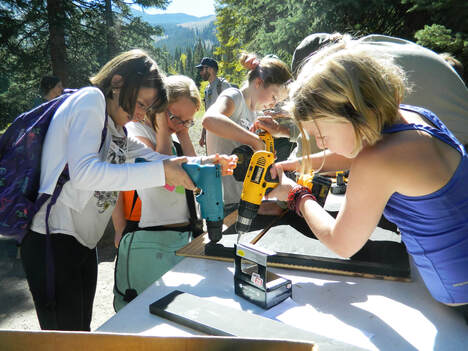
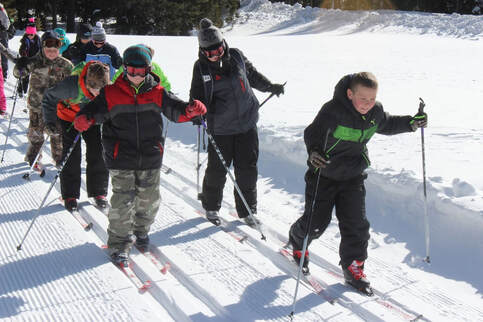
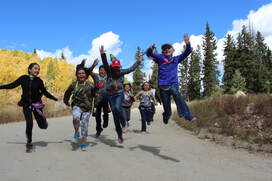

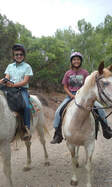
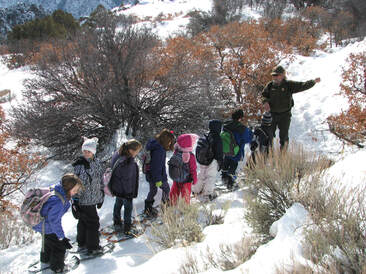
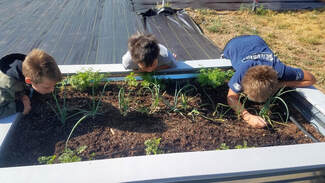
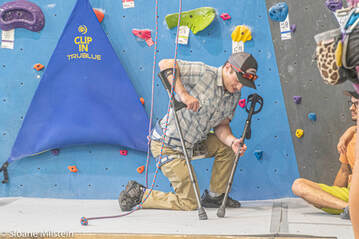
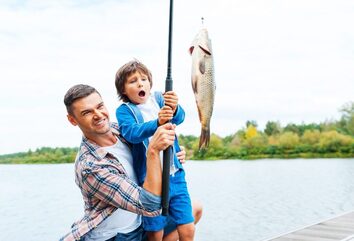
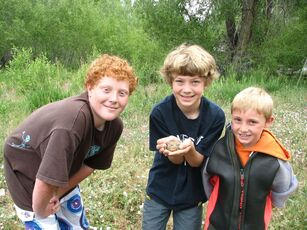
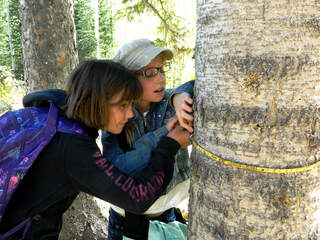

 RSS Feed
RSS Feed


